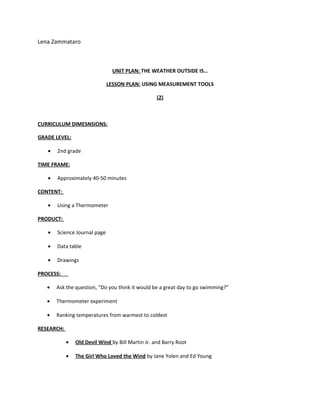This lesson plan is for a 2nd grade science class on using thermometers to measure temperature. Students will conduct an experiment using thermometers to measure the temperature of soil, water, and air in sunlight and shade. They will record their results and compare temperatures. The lesson aims to teach students how temperature varies based on environment and how it affects daily life. Assessment will include students' participation, drawings in their science journals, and completing an observation checklist.





